Inornate rainbowfish - Melanotaenia splendida inornata
Scientific name: Melanotaenia splendida inornata
Common name: Inornate rainbowfish
Family: Melanotaeniidae
Usual size in fish tanks: 12 - 15 cm (4.72 - 5.91 inch)
014
Recommended pH range: 6.5 - 8
Recommended water hardness: 8 - 12°N (142.86 - 214.29ppm)
0°C 32°F30°C 86°F
Recommended temperature range: 24 - 30 °C (75.2 - 86°F)
The way how these fish reproduce: Spawning
Where the species comes from: Oceania
Temperament to its own species: peaceful
Temperament toward other fish species: peaceful
Usual place in the tank: Middle levels
Food and Feeding
Despite being classified as a carnivore, the Inornate Rainbowfish is an opportunistic feeder and will readily accept a wide variety of foods in an aquarium setting. A balanced diet should include high-quality flake food as the staple, supplemented with protein-rich treats such as bloodworms, brine shrimp, and daphnia. To enhance coloration and overall health, occasionally offer live or frozen foods. A varied diet will help maintain their vibrant appearance and natural foraging behaviors.
Origin
The Inornate Rainbowfish is native to Northern Australia, specifically found in the river systems of the Northern Territory and Queensland. These fish inhabit freshwater streams, slow-moving rivers, and floodplain lagoons with varying water parameters. Their natural habitat consists of clear to slightly turbid waters with submerged vegetation and rocky substrates.
Sexing
Sexing these fish is relatively straightforward once they mature. Males develop an elongated dorsal fin and a more pronounced sloping forehead, giving them a deeper body shape. They also exhibit more vibrant coloration, especially during courtship displays. Females are typically smaller, with a less intense color pattern and a more streamlined body shape.
Breeding
Breeding Melanotaenia splendida inornata in captivity is relatively easy, but raising the fry requires careful attention. To encourage spawning, add spawning mops or fine-leaved plants such as Java moss to the breeding tank, as these fish scatter their eggs among plant material.
Once eggs are laid, it is crucial to remove the mops or plants to a separate hatching tank to prevent predation by adult fish. The eggs typically hatch within 5 to 7 days, depending on water temperature. Newly hatched fry are extremely small and should be fed Infusoria or vinegar eels until they grow large enough to accept freshly hatched brine shrimp or crushed flake food. Growth is relatively slow, so maintaining optimal water quality and a high-quality diet is essential.
Lifespan
With proper care, the Inornate Rainbowfish can live for approximately 5 years, though some specimens may live longer in well-maintained aquariums with stable water conditions.
Temperament and Tank Mates
The Melanotaenia splendida inornata is a peaceful schooling species that thrives in groups of at least six individuals. Keeping a ratio of two males to several females is recommended, as males will display their best colors when competing for the attention of females.
These fish are excellent candidates for a community tank and can be housed with other peaceful species such as:
It is best to avoid aggressive or fin-nipping species that may stress the Inornate Rainbowfish.
Tank Requirements
- Minimum Tank Size: 110 liters (~30 gallons) for a small group
- Water Temperature: 24 - 30°C (75.2 - 86°F)
- pH Range: 6.5 - 8
- Water Hardness: 8 - 12°N (142.86 - 214.29 ppm)
Regular water changes are essential to maintain water quality. The species is adaptable but thrives in clean, well-oxygenated water with moderate flow.
Short Description
The Inornate Rainbowfish (Melanotaenia splendida inornata) is a hardy and adaptable species, making it a great choice for aquarists of all experience levels. Although it lacks the bright coloration of some other rainbowfish, it still exhibits attractive hues, particularly when kept in optimal conditions. Keeping multiple males together will encourage their most striking color displays.
As an active schooling fish, they require ample swimming space and benefit from a tank setup that includes both open swimming areas and planted sections for shelter. Regular water changes and a high-quality diet will keep these fish healthy and vibrant in a home aquarium.
Picture
Bought by aqua-fish.net from jjphoto.dk.
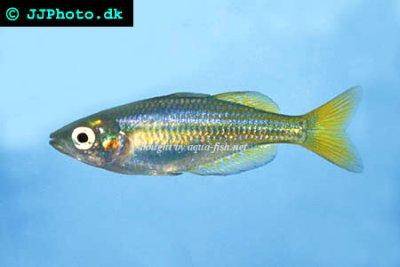

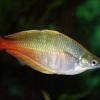 Bleher’s
Bleher’s 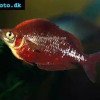 Red
Red 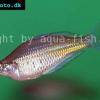 Ramu
Ramu 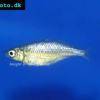 Wanam
Wanam 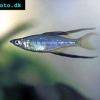 Threadfin
Threadfin 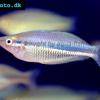 New
New 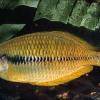 Yakati
Yakati 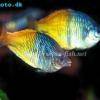 Boesemani
Boesemani 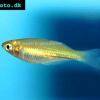 Crimson
Crimson 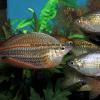 Australian
Australian 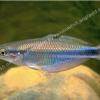 Goldie
Goldie 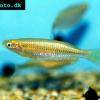 Slender
Slender 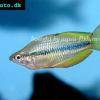 Lake
Lake 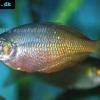 Irian
Irian 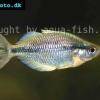 Kamaka
Kamaka 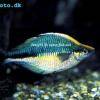 Lake
Lake 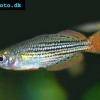 Dwarf
Dwarf 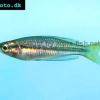 Black
Black 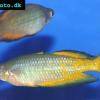 Parkinsoni
Parkinsoni 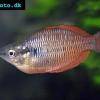 Sunset
Sunset 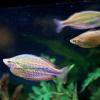 Neon
Neon 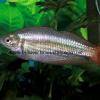 Western
Western 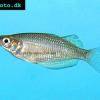 Ruby
Ruby 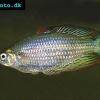 Eastern
Eastern 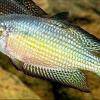 Desert
Desert 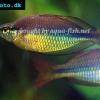 Regal
Regal